Hazelnuts are a popular and versatile type of nut that have been consumed for thousands of years. They are known for their unique flavor and are used in a wide variety of culinary applications, including baking, cooking, and snacking. Hazelnuts are also a key ingredient in many confectionery products, such as chocolate spreads and pralines. Hazelnuts are the nuts of the hazel tree, which is native to Europe and Asia. The scientific name for the hazel tree is Corylus avellana. The trees can grow to a height of 12-20 feet and produce small, round or oval-shaped nuts that are encased in a hard, woody shell. One of the reasons hazelnuts are so popular is because of their rich and distinct flavor. They have a slightly sweet and nutty taste, which can be enjoyed on their own or as a complement to other ingredients in dishes. Hazelnuts are commonly roasted to enhance their flavor and make them easier to remove from their shells. In addition to their delicious taste, hazelnuts are also known for their numerous health benefits. They are a good source of healthy fats, fiber, protein, and various vitamins and minerals. Hazelnuts are particularly rich in vitamin E, which is an antioxidant that helps protect cells from damage and supports healthy skin. They also contain high levels of magnesium, which plays a crucial role in maintaining strong bones and regulating blood pressure. Furthermore, hazelnuts have been associated with several potential health benefits. Multiple studies have suggested that hazelnuts may help reduce the risk of heart disease by improving blood cholesterol levels and reducing inflammation in the body. The high content of monounsaturated fats and antioxidants in hazelnuts may contribute to these cardiovascular benefits. In addition to cardiovascular health, hazelnuts may also have a positive impact on weight management. Despite being energy-dense, studies have shown that the consumption of hazelnuts does not lead to significant weight gain. This is attributed to the fact that hazelnuts are rich in dietary fiber, protein, and healthy fats, which can promote feelings of fullness and satiety. Another notable benefit of hazelnuts is their potential role in cognitive health. Research has indicated that the high levels of antioxidants found in hazelnuts may have neuroprotective effects, reducing the risk of age-related cognitive decline and enhancing brain function.
nuts
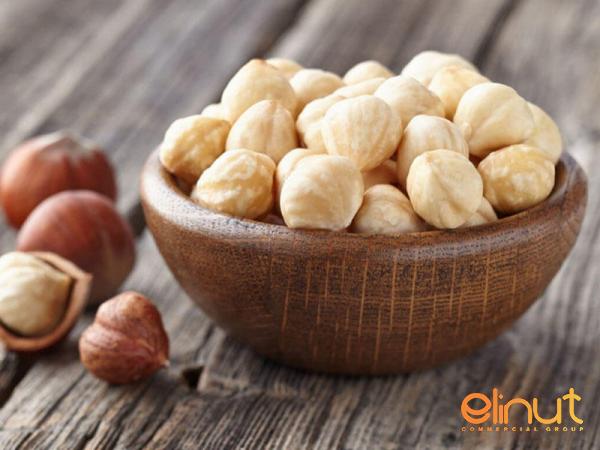 While more studies are needed to confirm these effects, the preliminary findings are promising. Aside from their nutritional and health benefits, hazelnuts also play a significant role in the culinary world. They are widely used in both sweet and savory dishes and are a staple ingredient in many traditional recipes. Hazelnuts are often used as toppings for salads, incorporated into baked goods such as breads and cookies, or transformed into spreads like Nutella. One of the most well-known and beloved uses of hazelnuts is in the production of chocolate. Hazelnuts and chocolate are a classic combination, and the two flavors complement each other perfectly. Hazelnut praline, a mixture of caramelized hazelnuts and chocolate, is a popular confectionery ingredient and is used in various desserts and candies. The global hazelnut market is a rapidly growing industry, driven by increasing demand for hazelnut-based products and rising consumer awareness of their health benefits. Turkey is the largest producer of hazelnuts, accounting for approximately 70% of the world’s supply. Other major hazelnut-producing countries include Italy, the United States, Azerbaijan, and Georgia. However, the hazelnut industry faces several challenges. Hazelnut trees are susceptible to various diseases and pests, which can affect both the quality and quantity of the crop. Climate change is also a concern, as hazelnuts require specific temperature and moisture conditions to grow and thrive. Additionally, fluctuations in global hazelnut prices and trade tensions can impact the profitability of hazelnut producers. In conclusion, hazelnuts are a delicious and nutritious nut that offers a wide range of culinary possibilities. They are not only enjoyed for their flavor but also known for their potential health benefits, including improved heart health, weight management, and cognitive function. Hazelnuts are a key ingredient in many popular confectionery products, such as chocolate spreads and pralines. Despite the challenges faced by the hazelnut industry, the demand for hazelnuts continues to rise, driven by their unique taste and versatility in the kitchen.1. Hazelnut Production and Market Overview The global hazelnut market has experienced significant growth in recent years, driven by increasing consumer demand for hazelnut-based products and their versatile culinary applications. Turkey is the largest producer of hazelnuts, accounting for approximately 70% of the world’s supply. The country’s favorable climate and soil conditions make it an ideal location for hazelnut cultivation. Other major hazelnut-producing countries include Italy, the United States, Azerbaijan, and Georgia. The global hazelnut market is highly competitive, with both large-scale producers and small family farms contributing to the overall supply. Hazelnuts are harvested in late summer or early fall when the nuts have fully matured. After harvest, the nuts undergo a series of cleaning and processing steps to ensure quality and safety. The market for hazelnuts is diverse, with various segments catering to different consumer preferences. Hazelnuts can be sold in their raw form or further processed into roasted nuts, hazelnut spreads, oils, and other value-added products. The demand for hazelnut-based spreads, such as Nutella and other chocolate-hazelnut spreads, has been particularly strong in recent years. 2. Hazelnut Processing and Value-Added Products Hazelnuts undergo several processing steps to enhance their flavor, texture, and shelf life. After harvest, the nuts are typically dried to reduce moisture content. This helps prevent mold and bacterial growth during storage and transportation. Once dried, the nuts can be cracked to remove the outer shell, revealing the edible kernel inside. Roasting is a common processing technique used to enhance the flavor of hazelnuts. The nuts are heated at high temperatures, which brings out their natural oils and gives them a rich, toasty flavor. Roasted hazelnuts are commonly used in baking, cooking, or as a standalone snack. Hazelnuts can also be further processed into various value-added products. Hazelnut spreads, such as Nutella, have gained immense popularity around the world. These spreads combine roasted hazelnuts with cocoa powder, sugar, and other ingredients to create a creamy and indulgent treat. Hazelnut oil is another value-added product that is widely used in cooking and cosmetics. The oil is extracted from roasted hazelnuts and is prized for its delicate flavor and high content of monounsaturated fats. Hazelnut oil is often used as a salad dressing, as a finishing oil for dishes, or as a moisturizer in skincare products. 3. Hazelnuts in the Confectionery Industry Hazelnuts play a crucial role in the confectionery industry, particularly in the production of chocolate and pralines.
While more studies are needed to confirm these effects, the preliminary findings are promising. Aside from their nutritional and health benefits, hazelnuts also play a significant role in the culinary world. They are widely used in both sweet and savory dishes and are a staple ingredient in many traditional recipes. Hazelnuts are often used as toppings for salads, incorporated into baked goods such as breads and cookies, or transformed into spreads like Nutella. One of the most well-known and beloved uses of hazelnuts is in the production of chocolate. Hazelnuts and chocolate are a classic combination, and the two flavors complement each other perfectly. Hazelnut praline, a mixture of caramelized hazelnuts and chocolate, is a popular confectionery ingredient and is used in various desserts and candies. The global hazelnut market is a rapidly growing industry, driven by increasing demand for hazelnut-based products and rising consumer awareness of their health benefits. Turkey is the largest producer of hazelnuts, accounting for approximately 70% of the world’s supply. Other major hazelnut-producing countries include Italy, the United States, Azerbaijan, and Georgia. However, the hazelnut industry faces several challenges. Hazelnut trees are susceptible to various diseases and pests, which can affect both the quality and quantity of the crop. Climate change is also a concern, as hazelnuts require specific temperature and moisture conditions to grow and thrive. Additionally, fluctuations in global hazelnut prices and trade tensions can impact the profitability of hazelnut producers. In conclusion, hazelnuts are a delicious and nutritious nut that offers a wide range of culinary possibilities. They are not only enjoyed for their flavor but also known for their potential health benefits, including improved heart health, weight management, and cognitive function. Hazelnuts are a key ingredient in many popular confectionery products, such as chocolate spreads and pralines. Despite the challenges faced by the hazelnut industry, the demand for hazelnuts continues to rise, driven by their unique taste and versatility in the kitchen.1. Hazelnut Production and Market Overview The global hazelnut market has experienced significant growth in recent years, driven by increasing consumer demand for hazelnut-based products and their versatile culinary applications. Turkey is the largest producer of hazelnuts, accounting for approximately 70% of the world’s supply. The country’s favorable climate and soil conditions make it an ideal location for hazelnut cultivation. Other major hazelnut-producing countries include Italy, the United States, Azerbaijan, and Georgia. The global hazelnut market is highly competitive, with both large-scale producers and small family farms contributing to the overall supply. Hazelnuts are harvested in late summer or early fall when the nuts have fully matured. After harvest, the nuts undergo a series of cleaning and processing steps to ensure quality and safety. The market for hazelnuts is diverse, with various segments catering to different consumer preferences. Hazelnuts can be sold in their raw form or further processed into roasted nuts, hazelnut spreads, oils, and other value-added products. The demand for hazelnut-based spreads, such as Nutella and other chocolate-hazelnut spreads, has been particularly strong in recent years. 2. Hazelnut Processing and Value-Added Products Hazelnuts undergo several processing steps to enhance their flavor, texture, and shelf life. After harvest, the nuts are typically dried to reduce moisture content. This helps prevent mold and bacterial growth during storage and transportation. Once dried, the nuts can be cracked to remove the outer shell, revealing the edible kernel inside. Roasting is a common processing technique used to enhance the flavor of hazelnuts. The nuts are heated at high temperatures, which brings out their natural oils and gives them a rich, toasty flavor. Roasted hazelnuts are commonly used in baking, cooking, or as a standalone snack. Hazelnuts can also be further processed into various value-added products. Hazelnut spreads, such as Nutella, have gained immense popularity around the world. These spreads combine roasted hazelnuts with cocoa powder, sugar, and other ingredients to create a creamy and indulgent treat. Hazelnut oil is another value-added product that is widely used in cooking and cosmetics. The oil is extracted from roasted hazelnuts and is prized for its delicate flavor and high content of monounsaturated fats. Hazelnut oil is often used as a salad dressing, as a finishing oil for dishes, or as a moisturizer in skincare products. 3. Hazelnuts in the Confectionery Industry Hazelnuts play a crucial role in the confectionery industry, particularly in the production of chocolate and pralines.
Specifications of nuts
 The combination of hazelnuts and chocolate is a classic pairing that has been enjoyed for centuries. Hazelnuts provide a satisfying crunch and a distinct flavor that perfectly complements the sweetness of chocolate. Pralines, a confectionery made from caramelized hazelnuts and chocolate, are a popular treat worldwide. The nuts are coated in a sugar syrup and then combined with chocolate to create a crunchy, nutty confection. Pralines are commonly used as standalone candies or incorporated into other desserts, such as ice creams, cakes, and pastries. The confectionery industry offers a wide range of hazelnut-based products, including chocolate bars, truffles, and filled chocolates. Hazelnuts may be used whole, chopped, or ground as an ingredient, depending on the desired texture and flavor profile. The versatility of hazelnuts makes them an essential component in many confectionery products, attracting consumers with their unique taste and texture. 4. Health and Nutritional Benefits Hazelnuts are not only flavorful but also offer numerous health benefits. They are a rich source of healthy fats, dietary fiber, protein, and various vitamins and minerals. Hazelnuts are an excellent source of vitamin E, an antioxidant that helps protect cells from damage and supports healthy skin. They also contain high levels of magnesium, which is essential for bone health and regulating blood pressure. Several studies have indicated that hazelnuts may have a positive impact on heart health. The high content of monounsaturated fats and antioxidants in hazelnuts has been associated with reducing LDL cholesterol levels and improving overall cardiovascular health. Consuming hazelnuts as part of a balanced diet may help lower the risk of heart disease. Hazelnuts may also contribute to weight management due to their nutritional composition. Despite being energy-dense, research suggests that hazelnuts do not lead to significant weight gain. The combination of dietary fiber, protein, and healthy fats in hazelnuts can promote feelings of fullness and satiety, helping to control appetite and prevent overeating. In addition to heart health and weight management, hazelnuts may have potential benefits for cognitive health. The high levels of antioxidants found in hazelnuts, such as vitamin E, have been linked to reduced risk of age-related cognitive decline. While more research is needed to fully understand the effects, incorporating hazelnuts as part of a balanced diet may support brain health. 5. Hazelnut Sustainability and Environmental Impact Like most agricultural commodities, hazelnut production has environmental implications. Hazelnut cultivation requires specific climate and soil conditions, which limits the regions where hazelnut trees can grow.
The combination of hazelnuts and chocolate is a classic pairing that has been enjoyed for centuries. Hazelnuts provide a satisfying crunch and a distinct flavor that perfectly complements the sweetness of chocolate. Pralines, a confectionery made from caramelized hazelnuts and chocolate, are a popular treat worldwide. The nuts are coated in a sugar syrup and then combined with chocolate to create a crunchy, nutty confection. Pralines are commonly used as standalone candies or incorporated into other desserts, such as ice creams, cakes, and pastries. The confectionery industry offers a wide range of hazelnut-based products, including chocolate bars, truffles, and filled chocolates. Hazelnuts may be used whole, chopped, or ground as an ingredient, depending on the desired texture and flavor profile. The versatility of hazelnuts makes them an essential component in many confectionery products, attracting consumers with their unique taste and texture. 4. Health and Nutritional Benefits Hazelnuts are not only flavorful but also offer numerous health benefits. They are a rich source of healthy fats, dietary fiber, protein, and various vitamins and minerals. Hazelnuts are an excellent source of vitamin E, an antioxidant that helps protect cells from damage and supports healthy skin. They also contain high levels of magnesium, which is essential for bone health and regulating blood pressure. Several studies have indicated that hazelnuts may have a positive impact on heart health. The high content of monounsaturated fats and antioxidants in hazelnuts has been associated with reducing LDL cholesterol levels and improving overall cardiovascular health. Consuming hazelnuts as part of a balanced diet may help lower the risk of heart disease. Hazelnuts may also contribute to weight management due to their nutritional composition. Despite being energy-dense, research suggests that hazelnuts do not lead to significant weight gain. The combination of dietary fiber, protein, and healthy fats in hazelnuts can promote feelings of fullness and satiety, helping to control appetite and prevent overeating. In addition to heart health and weight management, hazelnuts may have potential benefits for cognitive health. The high levels of antioxidants found in hazelnuts, such as vitamin E, have been linked to reduced risk of age-related cognitive decline. While more research is needed to fully understand the effects, incorporating hazelnuts as part of a balanced diet may support brain health. 5. Hazelnut Sustainability and Environmental Impact Like most agricultural commodities, hazelnut production has environmental implications. Hazelnut cultivation requires specific climate and soil conditions, which limits the regions where hazelnut trees can grow.
Buy nuts
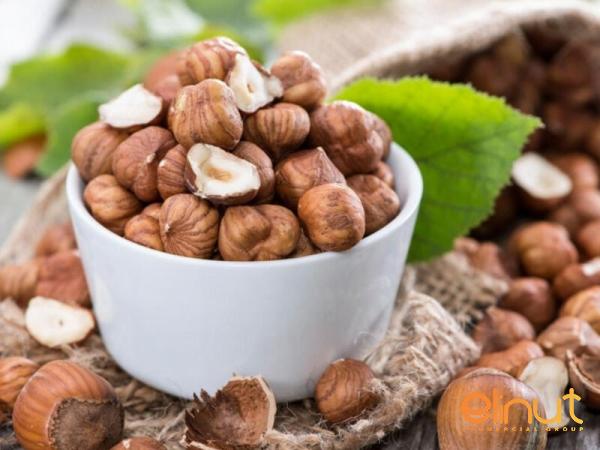 The expansion of hazelnut cultivation may lead to deforestation or habitat destruction if not managed sustainably. To minimize the environmental impact, sustainable farming practices are crucial. This includes implementing measures such as water conservation, responsible pesticide use, and soil erosion prevention. Sustainable hazelnut farming focuses on maintaining soil health, biodiversity, and reducing greenhouse gas emissions. Some hazelnut producers have also embraced certification programs that ensure environmental and social responsibility. These certifications, such as Fairtrade or Rainforest Alliance, provide assurance to consumers that the hazelnuts they purchase are produced in an ethical and sustainable manner. 6. Hazelnut Allergies and Safety Considerations While hazelnuts offer numerous health benefits, it’s important to note that they can pose a risk for individuals with nut allergies. Hazelnuts are one of the tree nuts known to cause allergic reactions, ranging from mild symptoms such as itching and hives to severe anaphylaxis. It’s crucial for individuals with nut allergies to avoid hazelnuts and products that contain them. Cross-contamination can be a concern in facilities that process hazelnuts, as trace amounts of hazelnut protein may be present in other products. Manufacturers are required to clearly label products that contain hazelnuts to ensure consumers with allergies are aware of their presence. Additionally, proper storage is essential to maintain the freshness and safety of hazelnuts. Hazelnuts should be stored in a cool, dry place to prevent moisture absorption and the growth of mold or bacteria. Sealed containers or bags are recommended to protect the nuts from exposure to air, light, and pests. 7. Hazelnuts in International Trade and Price Fluctuations The hazelnut market is subject to price fluctuations due to various factors, including supply and demand dynamics, weather conditions, and global trade tensions. Hazelnut prices can be influenced by changes in production levels, consumer demand, and currency fluctuations. Political and economic factors can also impact the hazelnut market. For example, trade disputes between countries can lead to tariffs or other trade barriers that affect the export and import of hazelnuts. These disruptions can have significant implications for both hazelnut producers and consumers. Importing and exporting hazelnuts requires compliance with international trade regulations and quality standards. Exporters must ensure that the nuts meet the required quality specifications and adhere to food safety regulations. Additionally, hazelnut producers and traders must keep up with market trends and consumer preferences to remain competitive in the global trade. 8. Hazelnut Industry Challenges and Opportunities The hazelnut industry faces several challenges that can impact production and profitability. Hazelnut trees are susceptible to diseases and pests, such as Eastern filbert blight or aphids, which can lead to yield losses and quality deterioration. Implementing effective pest management and disease prevention strategies is essential to mitigate these risks. Climate change is also a concern for the hazelnut industry. Hazelnut trees require specific temperature and moisture conditions for optimal growth, and changes in climate patterns can affect production.
The expansion of hazelnut cultivation may lead to deforestation or habitat destruction if not managed sustainably. To minimize the environmental impact, sustainable farming practices are crucial. This includes implementing measures such as water conservation, responsible pesticide use, and soil erosion prevention. Sustainable hazelnut farming focuses on maintaining soil health, biodiversity, and reducing greenhouse gas emissions. Some hazelnut producers have also embraced certification programs that ensure environmental and social responsibility. These certifications, such as Fairtrade or Rainforest Alliance, provide assurance to consumers that the hazelnuts they purchase are produced in an ethical and sustainable manner. 6. Hazelnut Allergies and Safety Considerations While hazelnuts offer numerous health benefits, it’s important to note that they can pose a risk for individuals with nut allergies. Hazelnuts are one of the tree nuts known to cause allergic reactions, ranging from mild symptoms such as itching and hives to severe anaphylaxis. It’s crucial for individuals with nut allergies to avoid hazelnuts and products that contain them. Cross-contamination can be a concern in facilities that process hazelnuts, as trace amounts of hazelnut protein may be present in other products. Manufacturers are required to clearly label products that contain hazelnuts to ensure consumers with allergies are aware of their presence. Additionally, proper storage is essential to maintain the freshness and safety of hazelnuts. Hazelnuts should be stored in a cool, dry place to prevent moisture absorption and the growth of mold or bacteria. Sealed containers or bags are recommended to protect the nuts from exposure to air, light, and pests. 7. Hazelnuts in International Trade and Price Fluctuations The hazelnut market is subject to price fluctuations due to various factors, including supply and demand dynamics, weather conditions, and global trade tensions. Hazelnut prices can be influenced by changes in production levels, consumer demand, and currency fluctuations. Political and economic factors can also impact the hazelnut market. For example, trade disputes between countries can lead to tariffs or other trade barriers that affect the export and import of hazelnuts. These disruptions can have significant implications for both hazelnut producers and consumers. Importing and exporting hazelnuts requires compliance with international trade regulations and quality standards. Exporters must ensure that the nuts meet the required quality specifications and adhere to food safety regulations. Additionally, hazelnut producers and traders must keep up with market trends and consumer preferences to remain competitive in the global trade. 8. Hazelnut Industry Challenges and Opportunities The hazelnut industry faces several challenges that can impact production and profitability. Hazelnut trees are susceptible to diseases and pests, such as Eastern filbert blight or aphids, which can lead to yield losses and quality deterioration. Implementing effective pest management and disease prevention strategies is essential to mitigate these risks. Climate change is also a concern for the hazelnut industry. Hazelnut trees require specific temperature and moisture conditions for optimal growth, and changes in climate patterns can affect production.
nuts + buy and sell
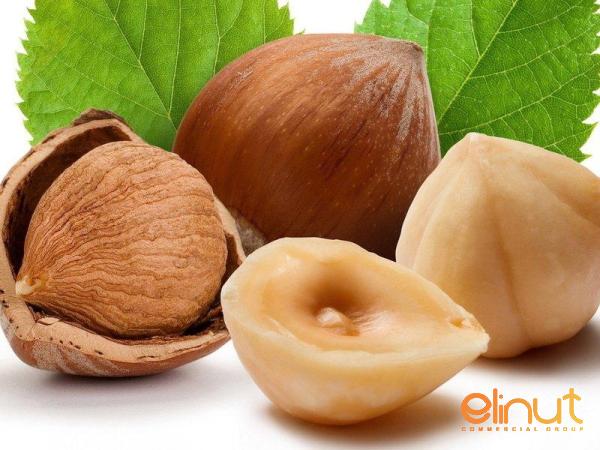 Extreme weather events, such as droughts, frost, or heatwaves, can damage hazelnut trees and reduce yields. Despite these challenges, the hazelnut industry presents opportunities for growth and innovation. The increasing demand for plant-based and natural food products has opened doors for hazelnuts to be incorporated into a variety of new product categories. Hazelnut-based vegan alternatives to dairy products, such as milk and cheese, have gained popularity among consumers looking for plant-based alternatives. Furthermore, the rising consumer awareness of the health benefits of hazelnuts presents an opportunity to promote hazelnut consumption and develop new, health-focused products. Hazelnuts can be used in the development of functional foods, snacks, and nutritional supplements that target specific consumer needs, such as heart health or weight management. 9. Hazelnuts in the Gourmet and Artisanal Food Industry In recent years, there has been a growing trend towards gourmet and artisanal food products, with consumers seeking unique and high-quality offerings. This trend has benefited the hazelnut industry, as hazelnuts are considered a premium ingredient in the culinary world. Artisanal chocolate makers, pastry chefs, and bakers often use hazelnuts to create exquisite and indulgent creations. The combination of hazelnuts’ rich flavor and versatility makes them a preferred choice for chefs and food enthusiasts looking to elevate their dishes. The gourmet and artisanal food industry also presents opportunities for hazelnut producers to differentiate their products and target niche markets. By focusing on quality, traceability, and unique flavor profiles, producers can cater to consumers who are willing to pay a premium for high-end and specialty hazelnuts. 10. Hazelnut Market Trends and Future Outlook The hazelnut market is expected to continue growing in the coming years, driven by increasing consumer demand for hazelnut-based products and their versatility in various applications. Changing dietary preferences, rising health consciousness, and the popularity of plant-based diets contribute to the demand for hazelnuts. The global market for hazelnuts is also influenced by evolving consumer preferences for sustainably produced and ethically sourced foods. Producers that prioritize sustainability and social responsibility can gain a competitive edge and attract environmentally conscious consumers. Furthermore, technological advancements in hazelnut farming, processing, and product development are anticipated to drive innovation and further expand the market. Research and development efforts to improve disease resistance, increase yields, and develop new hazelnut-based products will contribute to the future growth and diversification of the hazelnut industry. In conclusion, hazelnuts are a versatile and flavorful nut that offers numerous culinary, health, and business opportunities. Hazelnut production is dominated by countries like Turkey, which has favorable conditions for hazelnut cultivation. Hazelnuts are used in a variety of processed and value-added products, particularly in the confectionery industry, where they are paired with chocolate to create delicious treats. Hazelnuts offer several health benefits, including cardiovascular health, weight management, and potential cognitive benefits. However, it’s essential to consider allergenic reactions and adhere to safety regulations in handling and labeling hazelnut products. The hazelnut industry faces challenges such as pests, diseases, and market fluctuations, but also presents opportunities for growth and innovation. With the rising demand for gourmet and artisanal foods, as well as the increasing trend towards plant-based diets and sustainability, the hazelnut market is expected to continue expanding in the future.
Extreme weather events, such as droughts, frost, or heatwaves, can damage hazelnut trees and reduce yields. Despite these challenges, the hazelnut industry presents opportunities for growth and innovation. The increasing demand for plant-based and natural food products has opened doors for hazelnuts to be incorporated into a variety of new product categories. Hazelnut-based vegan alternatives to dairy products, such as milk and cheese, have gained popularity among consumers looking for plant-based alternatives. Furthermore, the rising consumer awareness of the health benefits of hazelnuts presents an opportunity to promote hazelnut consumption and develop new, health-focused products. Hazelnuts can be used in the development of functional foods, snacks, and nutritional supplements that target specific consumer needs, such as heart health or weight management. 9. Hazelnuts in the Gourmet and Artisanal Food Industry In recent years, there has been a growing trend towards gourmet and artisanal food products, with consumers seeking unique and high-quality offerings. This trend has benefited the hazelnut industry, as hazelnuts are considered a premium ingredient in the culinary world. Artisanal chocolate makers, pastry chefs, and bakers often use hazelnuts to create exquisite and indulgent creations. The combination of hazelnuts’ rich flavor and versatility makes them a preferred choice for chefs and food enthusiasts looking to elevate their dishes. The gourmet and artisanal food industry also presents opportunities for hazelnut producers to differentiate their products and target niche markets. By focusing on quality, traceability, and unique flavor profiles, producers can cater to consumers who are willing to pay a premium for high-end and specialty hazelnuts. 10. Hazelnut Market Trends and Future Outlook The hazelnut market is expected to continue growing in the coming years, driven by increasing consumer demand for hazelnut-based products and their versatility in various applications. Changing dietary preferences, rising health consciousness, and the popularity of plant-based diets contribute to the demand for hazelnuts. The global market for hazelnuts is also influenced by evolving consumer preferences for sustainably produced and ethically sourced foods. Producers that prioritize sustainability and social responsibility can gain a competitive edge and attract environmentally conscious consumers. Furthermore, technological advancements in hazelnut farming, processing, and product development are anticipated to drive innovation and further expand the market. Research and development efforts to improve disease resistance, increase yields, and develop new hazelnut-based products will contribute to the future growth and diversification of the hazelnut industry. In conclusion, hazelnuts are a versatile and flavorful nut that offers numerous culinary, health, and business opportunities. Hazelnut production is dominated by countries like Turkey, which has favorable conditions for hazelnut cultivation. Hazelnuts are used in a variety of processed and value-added products, particularly in the confectionery industry, where they are paired with chocolate to create delicious treats. Hazelnuts offer several health benefits, including cardiovascular health, weight management, and potential cognitive benefits. However, it’s essential to consider allergenic reactions and adhere to safety regulations in handling and labeling hazelnut products. The hazelnut industry faces challenges such as pests, diseases, and market fluctuations, but also presents opportunities for growth and innovation. With the rising demand for gourmet and artisanal foods, as well as the increasing trend towards plant-based diets and sustainability, the hazelnut market is expected to continue expanding in the future.





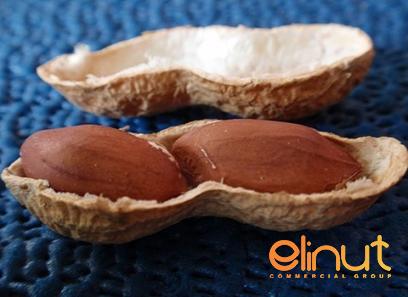


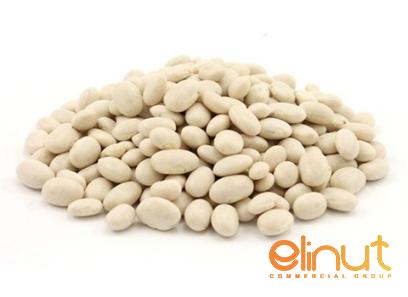


Your comment submitted.